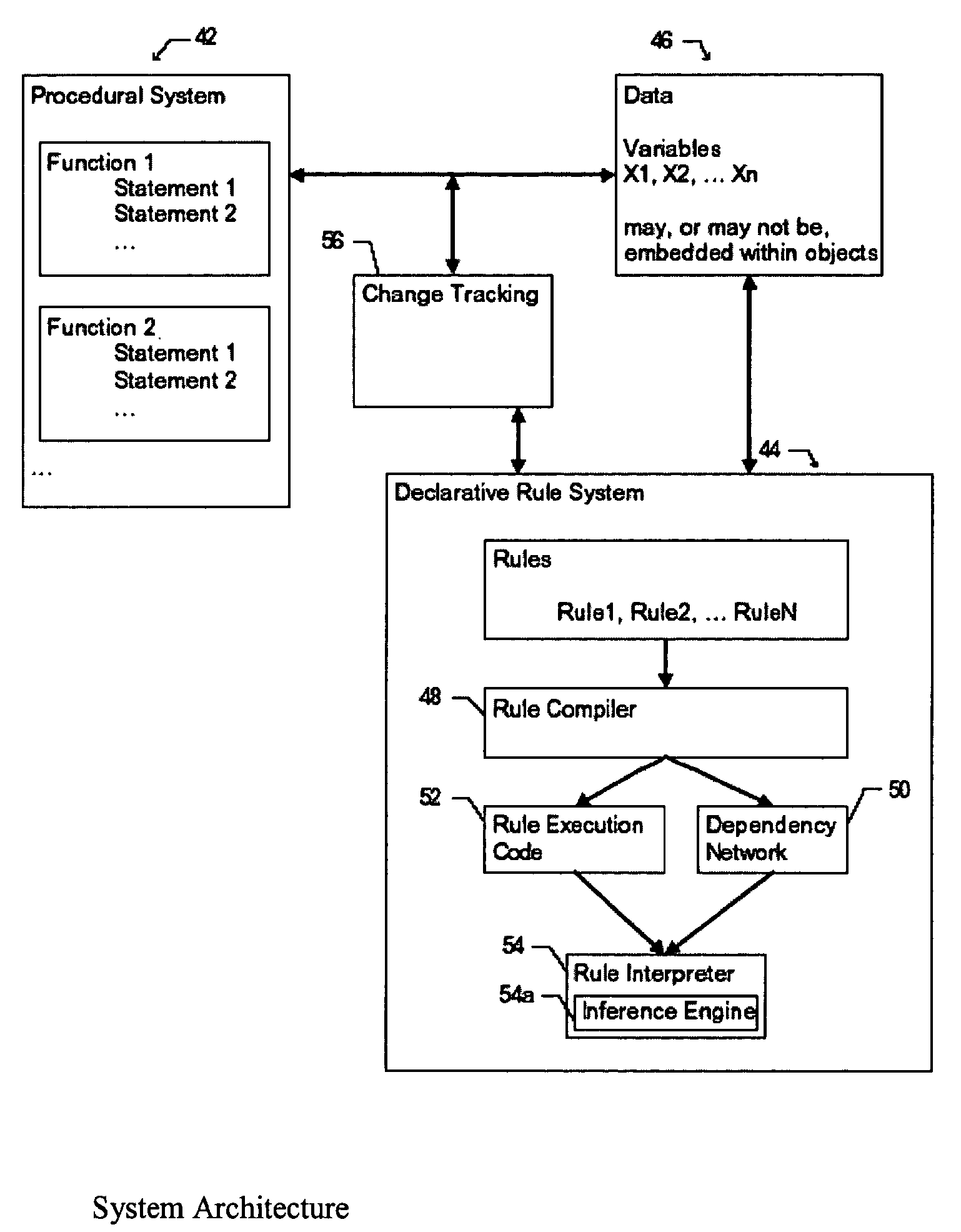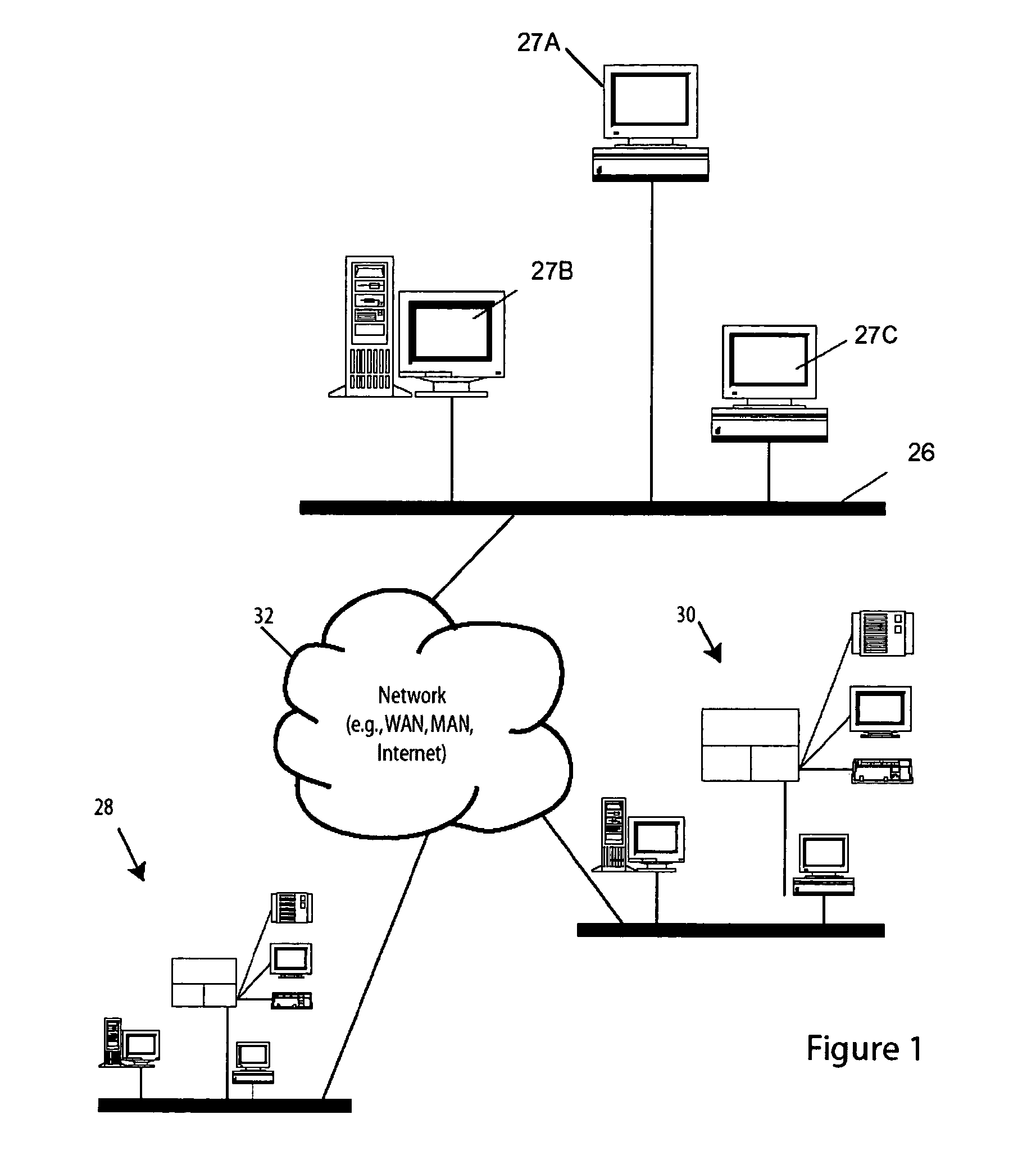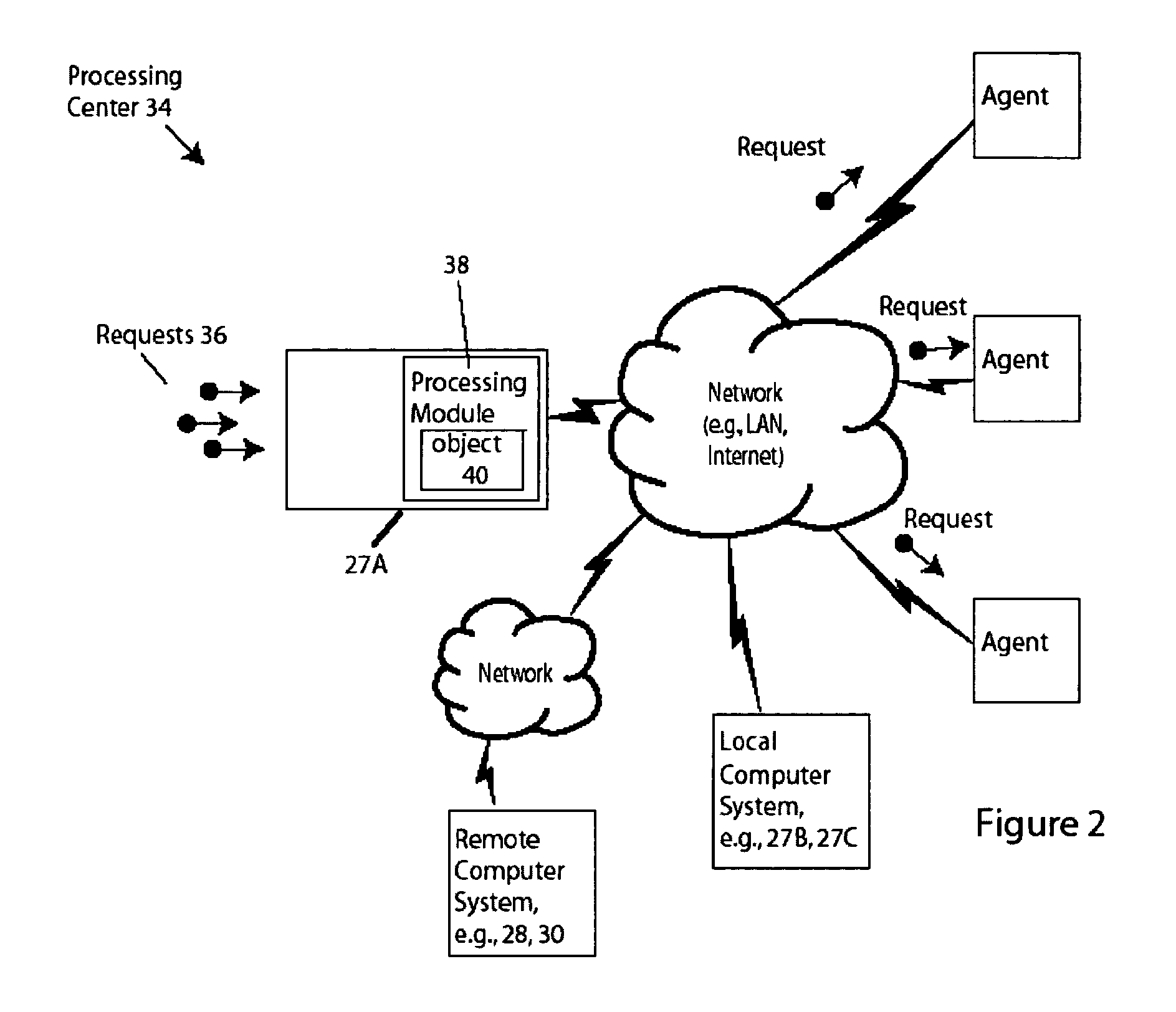Methods and apparatus for integration of declarative rule-based processing with procedural programming in a digital data-processing evironment
a digital data processing and procedural programming technology, applied in the field of digital data processing, can solve the problems of large number of bugs and usually not suitable for every aspect, and achieve the effects of minimizing the overhead of the procedural system associated, efficient propagation of the effects of changes, and maximizing efficiency
- Summary
- Abstract
- Description
- Claims
- Application Information
AI Technical Summary
Benefits of technology
Problems solved by technology
Method used
Image
Examples
example 1
Examplary Listing of a Typical Procedural Program
[0191]
/ / Compute_order computes price before tax based on product and / / quantity. It then calls compute_order_tax to compute tax based on / / which state the store where the purchase is made is in. After adding tax / / to compute total price, it computes balance after monthly payments.int compute_order(String product, int quantity, String store_location, int monthly_payment, int number_of_payments){ int price_before_tax, tax, total_price; int product_price; int principal, i; float monthly_interest; if (product == “flashlight”) product_price = 500; else if (product == “battery”) product_price = 100; price_before_tax = product_price * quantity; tax = compute_order_tax(price_before_tax, store_location); total_price = price_before_tax + tax; principal = total_price; monthly_interest = 0.005; for (i=1; i { principal = round(principal + principal * monthly_interest − monthly_payment); } return principal;}int compute_order_tax(int price_w...
example 2
Predicates Used by Change Tracking System
[0192]
Boolean PropertyInDependencyNetwork(String propertyName)Example: PropertyInDependencyNetwork(“Price”) returns true (for dependency network in FIG. 7)Boolean TopLevelClassInDependencyNetwork(String className)Example: TopLevelClassInDependencyNetwork(“Order”) returns true (for dependency network in FIG. 7)Boolean ContainingClassInDependencyNetwork(String className)Example: ContainingClassInDependencyNetwork(“ConfiguredProduct”) returns true (for dependency network in FIG. 7)DepNetNodeVariableDesignationInDependencyNetwork(String variableDesignation)Example: VariableDesignationInDependencyNetwork (“.OrderItems( ).ConfiguredProduct.Cost”) returns node ConfiguredProduct.Cost (for dependency network in FIG. 7)
example 3
Hash Tables that Support Change Tracking Predicates
[0193]PropertyInDependencyNetworkHash
[0194]This would contain the following values for the order computation example:[0195]TotalCost[0196]HandlingCost[0197]Cost[0198]Quantity[0199]ShippingCost[0200]Tax[0201]Price
[0202]TopLevelClassInDependencyNetworkHash
[0203]This would contain the value “Order” for the order computation example. It would contain more values if there were other dependency networks.
[0204]ContainingClassInDependencyNetworkHash
[0205]This would contain the following values for the order computation example:[0206]Order[0207]OrderItem[0208]ConfiguredProduct[0209]Component
[0210]VariableDesignationInDependencyNetworkHash
[0211]This would have the following structure for the order computation example[0212].TotalCost[0213].HandlingCost[0214].OrderItems( )[0215].Cost[0216].Quantity[0217].ConfiguredProduct[0218].Cost[0219].Price[0220].Tax[0221].ShippingCost[0222].Components[0223].Price[0224].Description
PUM
 Login to View More
Login to View More Abstract
Description
Claims
Application Information
 Login to View More
Login to View More - R&D
- Intellectual Property
- Life Sciences
- Materials
- Tech Scout
- Unparalleled Data Quality
- Higher Quality Content
- 60% Fewer Hallucinations
Browse by: Latest US Patents, China's latest patents, Technical Efficacy Thesaurus, Application Domain, Technology Topic, Popular Technical Reports.
© 2025 PatSnap. All rights reserved.Legal|Privacy policy|Modern Slavery Act Transparency Statement|Sitemap|About US| Contact US: help@patsnap.com



